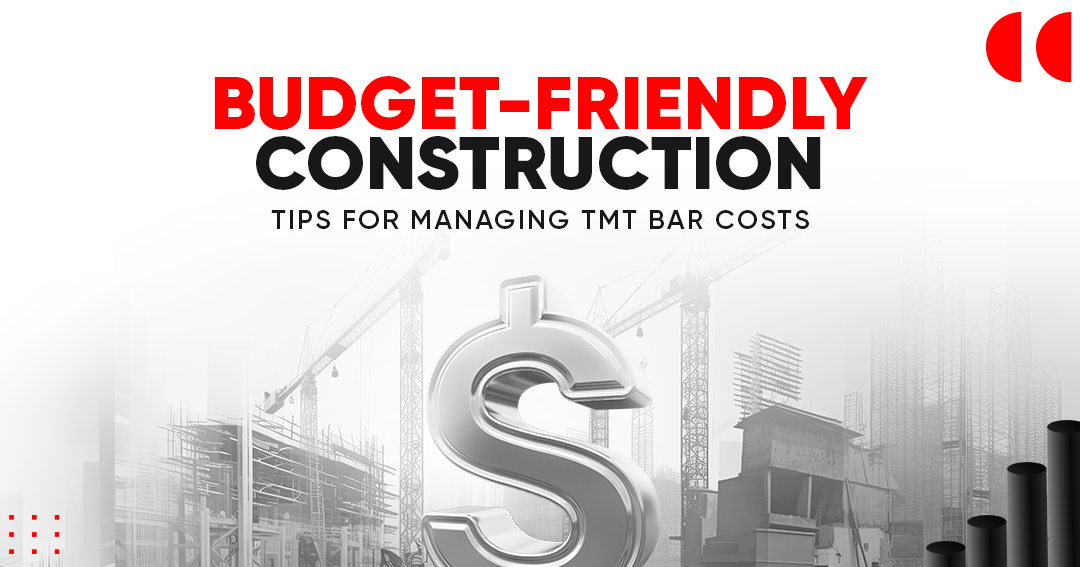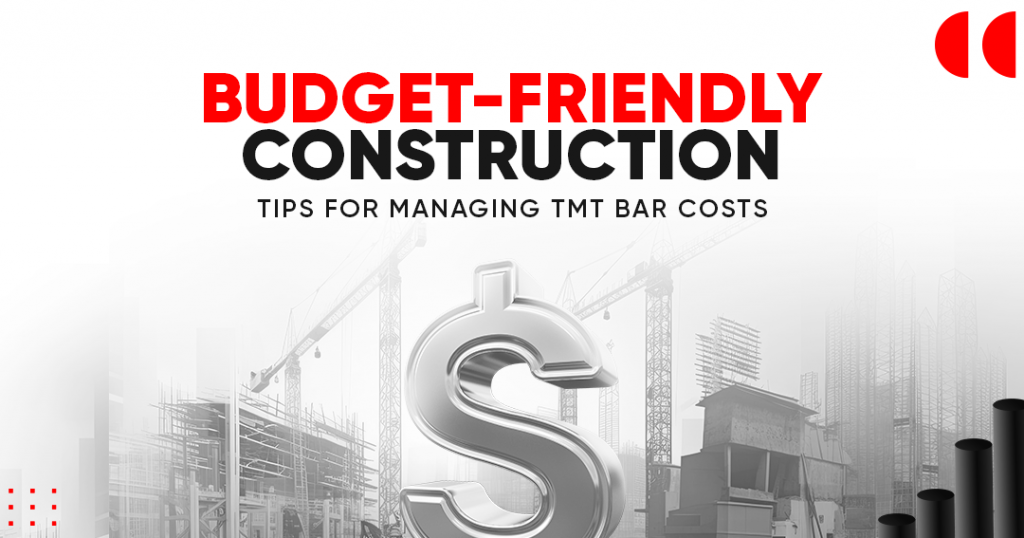Budget-Friendly Construction: Tips for Managing TMT Bar Costs

- By : admin
- 0 Comments

Crafting Budget-Friendly Structures with Smart TMT Bar Cost Management
Constructing a budget-friendly building involves strategic decisions, especially when it comes to TMT bar costs. TMT bars are integral to structural strength, but managing their expenses is key to economical construction. In this guide, we’ll explore insightful tips for effectively managing TMT bar price without compromising on quality.
Understanding TMT Bar Prices:
1. Market Research and Supplier Comparison:
Begin with thorough market research to understand the current TMT bar price trends. Compare prices from multiple suppliers, considering factors such as brand reputation, quality certifications, and additional services offered.
2. Bulk Purchases for Cost Savings:
Bulk purchases often lead to discounts. Negotiate with suppliers for favorable rates when buying TMT bars in larger quantities. This approach not only reduces costs but also ensures a steady supply throughout the construction process.
3. Quality versus Price: Striking the Right Balance:
While it’s tempting to opt for the lowest TMT bar price, prioritize quality. Investing in higher-quality TMT bars might incur a slightly higher initial cost, but it pays off in terms of durability, reducing maintenance expenses in the long run.
4. Local Sourcing to Minimize Transportation Costs:
Consider sourcing TMT bars locally to minimize transportation costs. Local suppliers often offer competitive prices, and the reduced logistical expenses contribute to overall cost savings.
5. Optimizing TMT Bar Sizes:
Optimize TMT bar sizes based on structural requirements. Consult with structural engineers to ensure that the selected sizes align with the design specifications. This prevents unnecessary expenses on excess material.
6. Negotiation Strategies with Suppliers:
Sharpen negotiation skills when dealing with TMT bar suppliers. Understand market dynamics, leverage bulk purchase advantages, and explore the possibility of long-term partnerships to secure better deals.
7. Strategic Project Planning for Timely Purchases:
Plan TMT bar purchases strategically to coincide with project timelines. Timely procurement prevents rushed decisions and allows for negotiations that result in more favorable TMT bar prices.
8. Utilizing Technology for Price Tracking:
Leverage technology tools and apps that track TMT bar prices over time. Stay informed about market fluctuations, enabling you to make well-timed purchases when prices are favorable.
9. Collaborative Approach with Contractors:
Foster collaboration with contractors and builders. Their insights and experience can contribute to cost-effective decisions, especially regarding the optimal use of TMT bars in different phases of construction.
10. Exploring Government Schemes and Subsidies:
Investigate government schemes or subsidies related to construction materials. In some regions, there might be initiatives supporting affordable construction materials, including TMT bars.
11. The Green and Cost-Effective Approach:
Integrate sustainable construction practices into your project, as they often align with cost-effectiveness. Some sustainable practices, such as using recycled steel in TMT bars, can contribute to environmental responsibility while potentially offering economic benefits.
12. Long-Term Partnerships for Consistency and Savings:
Foster long-term relationships with reliable TMT bar suppliers. Building a strong rapport can lead to consistent pricing, priority service, and additional benefits over time. Suppliers may be more willing to negotiate favorable terms with trusted, repeat customers.
13. Maximizing Efficiency without Compromising Quality:
Engage in value engineering to maximize efficiency without sacrificing quality. Work with engineers and architects to identify cost-effective alternatives that meet project requirements. This approach allows for smart decision-making in material selection, including TMT bars.
14. Mitigating Cost Overruns with Preparedness:
Incorporate contingency planning into your project budget to mitigate the impact of unexpected cost overruns. While focusing on managing TMT bar costs, having a financial buffer ensures that unforeseen challenges do not jeopardize the overall project.
15. Monitoring and Adapting to Market Trends:
Stay vigilant about market trends impacting TMT bar prices. Regularly monitor industry updates, global steel market trends, and geopolitical influences. Being proactive allows you to adapt your procurement strategy based on evolving market conditions.
16. Local Building Codes and Standards Compliance:
Ensure strict adherence to local building codes and standards. Non-compliance can lead to costly penalties and project delays. Prioritize TMT bars that meet or exceed regulatory requirements to avoid potential financial setbacks.
17. Financial Planning for TMT Bar Procurement:
Allocate a specific budget for TMT bar procurement within the overall project budget. Smart financial planning ensures that funds are earmarked appropriately, preventing overspending and allowing for optimized cost management.
18. Building Trust and Understanding:
Maintain transparent communication with stakeholders, including clients, architects, and contractors. Keeping them informed about TMT bar price considerations fosters understanding and trust. It also allows for collaborative decision-making to achieve budget-friendly goals.
Mastering TMT bar price is an art that requires a combination of market knowledge, negotiation skills, and strategic decision-making. By implementing these tips, construction professionals can navigate the complexities of TMT bar costs and create budget-friendly structures that stand the test of time. Building on a budget becomes not just a necessity but an opportunity for innovation and efficiency in the ever-evolving landscape of construction projects.
